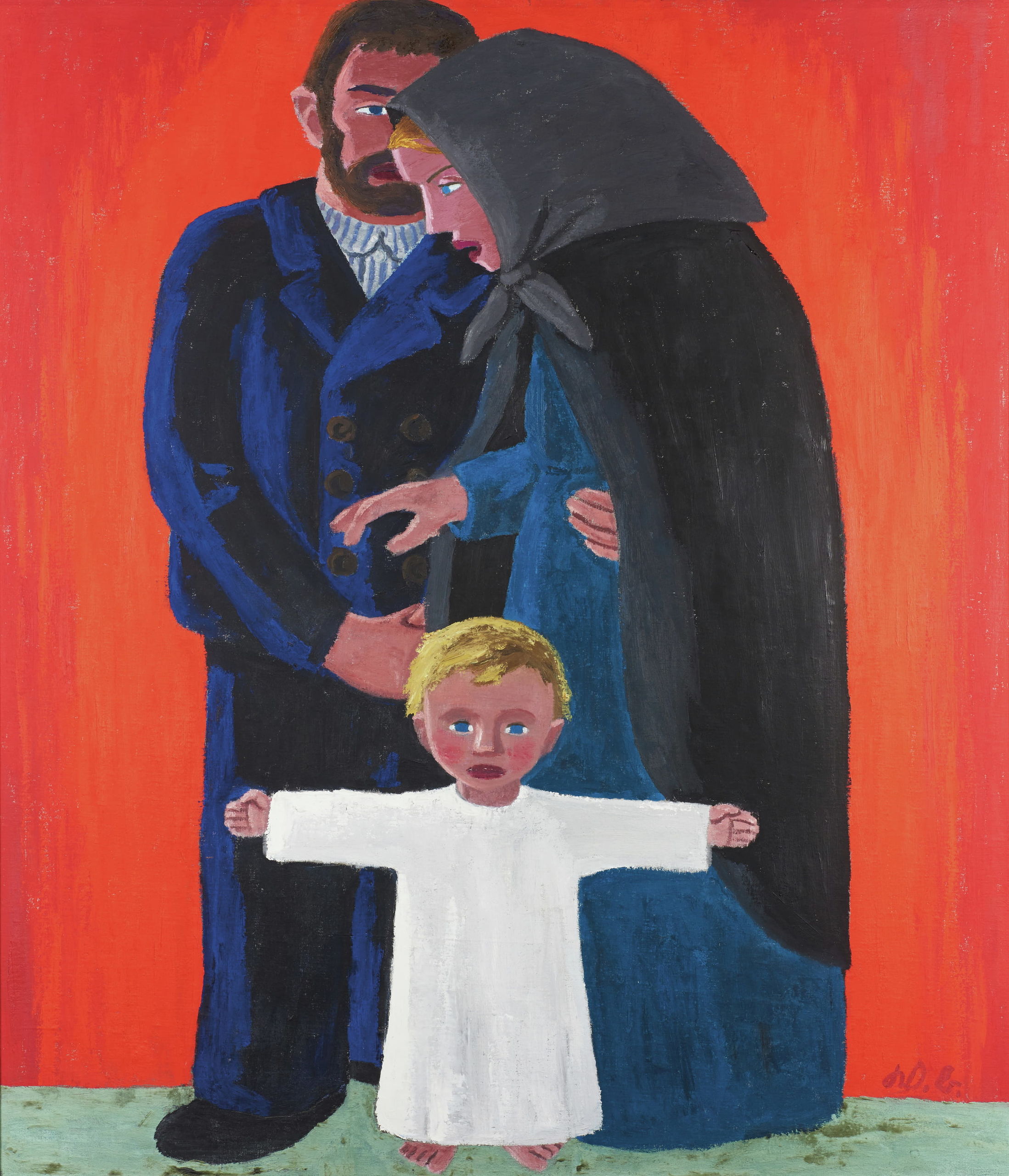Altar of the Holy Family

“The altar is not really a sacral image, but more a human image, just as the Holy Family is the most human theme among the stories of the Bible. The altar itself is also kept completely in the flat surface. I wanted to avoid both the overdone expression of Expressionism and the Baroque exaltation found in the fading old Austrian culture, and thus I depicted the motif from my perspective through simple intuition using color,” explained Werner Berg.
The Biblical material is presented in everyday scenes among simple farming people. The altar’s middle panel shows Maria and Joseph dressed like the farmers – most of them of Slovene ancestry – who were Werner Berg’s neighbors. Before them is the Christ Child in a white shirt, his arms spread symbolically in the form of the Cross, “bright as day” before an intensely red background surrounded by nocturnal scenes kept mostly in cooler blues.
The mountain range in the background of the “Flight into Egypt” is reminiscent of the Karavanken Mountains in Carinthia, while St. Anna’s striped headscarf and Maria’s polka-dotted skirt are formal details from Werner Berg’s lovingly observed domestic surroundings. While the animals and shepherds in the birth scene are reminiscent of folk nativity scenes, the naturalism of the nursing Maria is moving. Again, the patterns of the jacket and the kerchief help allow the Biblical events to appear with an immediate presence. The image at the above right shows a scene from the Gospel of St. Luke: Simeon takes the child in his arms and praises God with the words: “Lord, now lettest thou thine servant depart in peace, according to thy word: For mine eyes have seen thy salvation, which thou hast prepared before the face of all people; a light to lighten the Gentiles, and the glory of thy people Israel.”
The altar was completed in 1933 after numerous preparatory studies. It was created for a nunnery in Bavaria, but the nuns rejected it for being too modern. Berg then submitted the altar for an exhibition of religious modern art held on the occasion of the Catholic Congress organized in Vienna during Austria’s prewar fascist era. His submission was rejected by the jury.
In this work, Werner Berg comes closest to the art of Emil Nolde; one thinks of this artist’s nine-piece winged altar “The Life of Christ”. And yet upon closer inspection Berg’s stylistic trademarks are unmistakable, primarily with regard to form and color, but also in the radical flatness of the middle panel. Werner Berg himself said: “At that time I met Nolde: it was not as a follower of Nolde, but rather stimulated by him toward the pictorial that I wanted a very strict composition. I wanted to get to the ‘image’ and to almost negate painting, painting that is forced and hefty. Later it became more differentiated again, but the basis of the surface, the basis of the ‘image’ as such remained. It makes a great deal of difference whether I just portray something or whether I show it in the transformation of the image.”